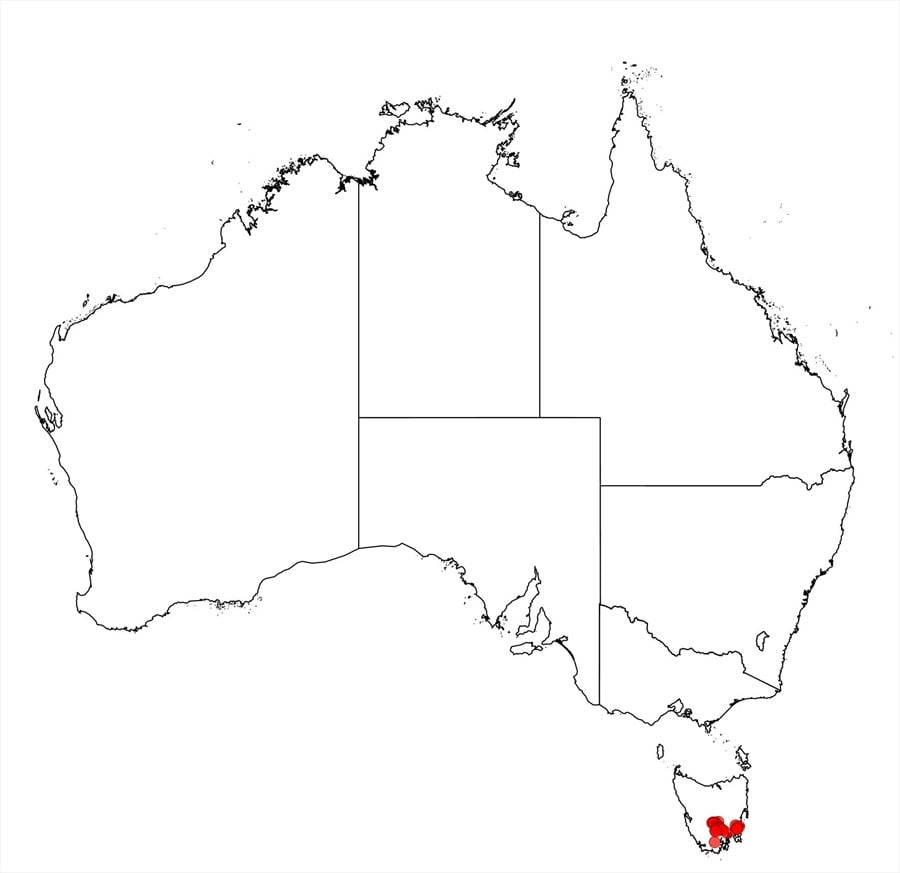Acacia derwentiana A.M.Gray
WATTLE
Acacias of Australia
Common Name
Derwent Cascade
Family
Fabaceae
Distribution
Southern Tas. where largely confined to banks of the Derwent R. and some of its lower tributaries; also ocurs, infrequently, along the Carlton and Prosser rivers and their tributaries.
Description
Shrub 1–3 (–5) m high. Branchlets slender and arching or pendulous at their extremities. Phyllodes scattered, never tightly clustered, linear to very narrowly elliptic, flat, 2–3.5 (–6.5) cm long, 1–2 (–2.5) mm wide, pungent, with 3 nerves (the central one the most prominent, the lateral two sometimes obscure); anastomosing nerves absent; gland often absent basal; pulvinus short. Inflorescences simple; peduncles (3–) 5–8 mm long; spikes interrupted, (5–) 10–25 mm long, pale yellow to almost lemon yellow; flowers 4-merous, 5–8 (–15) and widely spaced within the spike. Pods linear, curved, irregularly constricted between seeds, 2.5–3.5 (–5) cm long, 2–4 mm wide. Seeds elliptic; aril much-folded.
Specimens
Tas.: Dawson Rd crossing, Brad R., A.M.Gray 918 (HO n.v.); Tyenna R., Mill Lodge, A.M.Gray 963 (HO n.v., MEL).
Notes
Most closely related to A. riceana which differs most obviously in having phyllodes with l:w = 5–12 and often in tight fasciculate clusters of 3–6 (–10); in A. derwentiana the phyllodes have l:w = 12–20 (–40) and are seldom tightly clustered. Also related to A. axillaris which is readily distinguished by its flowers in globular heads.
FOA Reference
Data derived from Flora of Australia Volumes 11A (2001), 11B (2001) and 12 (1998), products of ABRS, ©Commonwealth of Australia
Author
B.R.Maslin
This identification key and fact sheets are available as a mobile application:
URL: https://apps.lucidcentral.org/wattle/
© Copyright 2018. All rights reserved.






